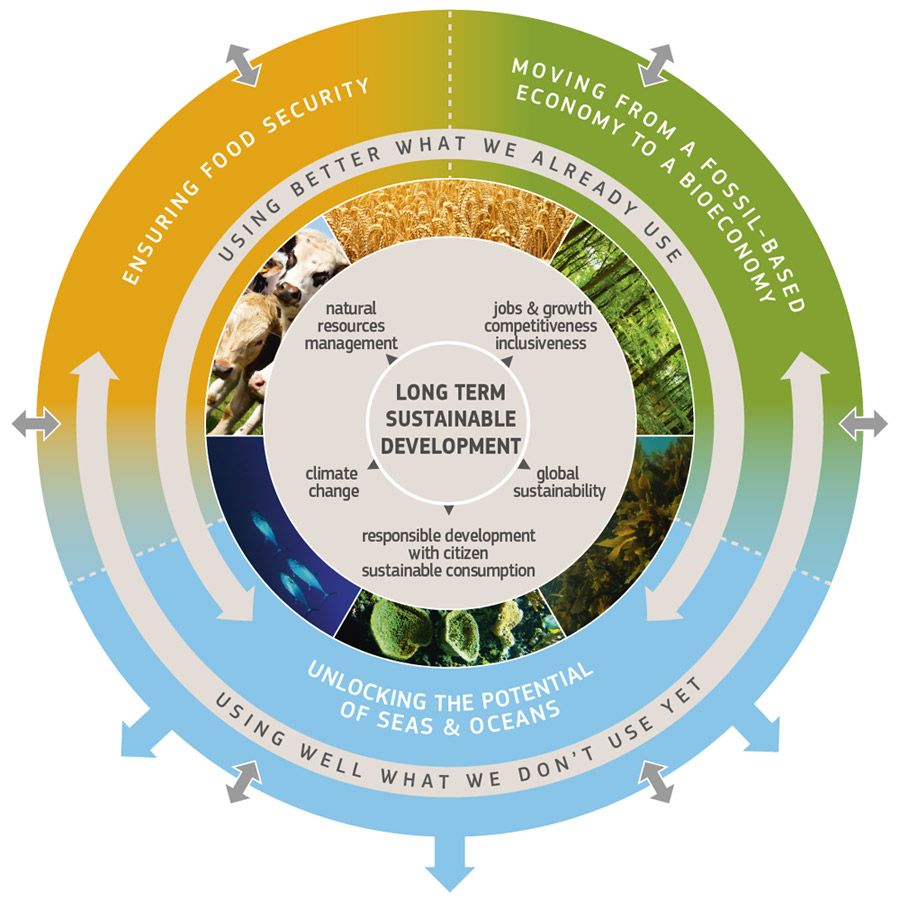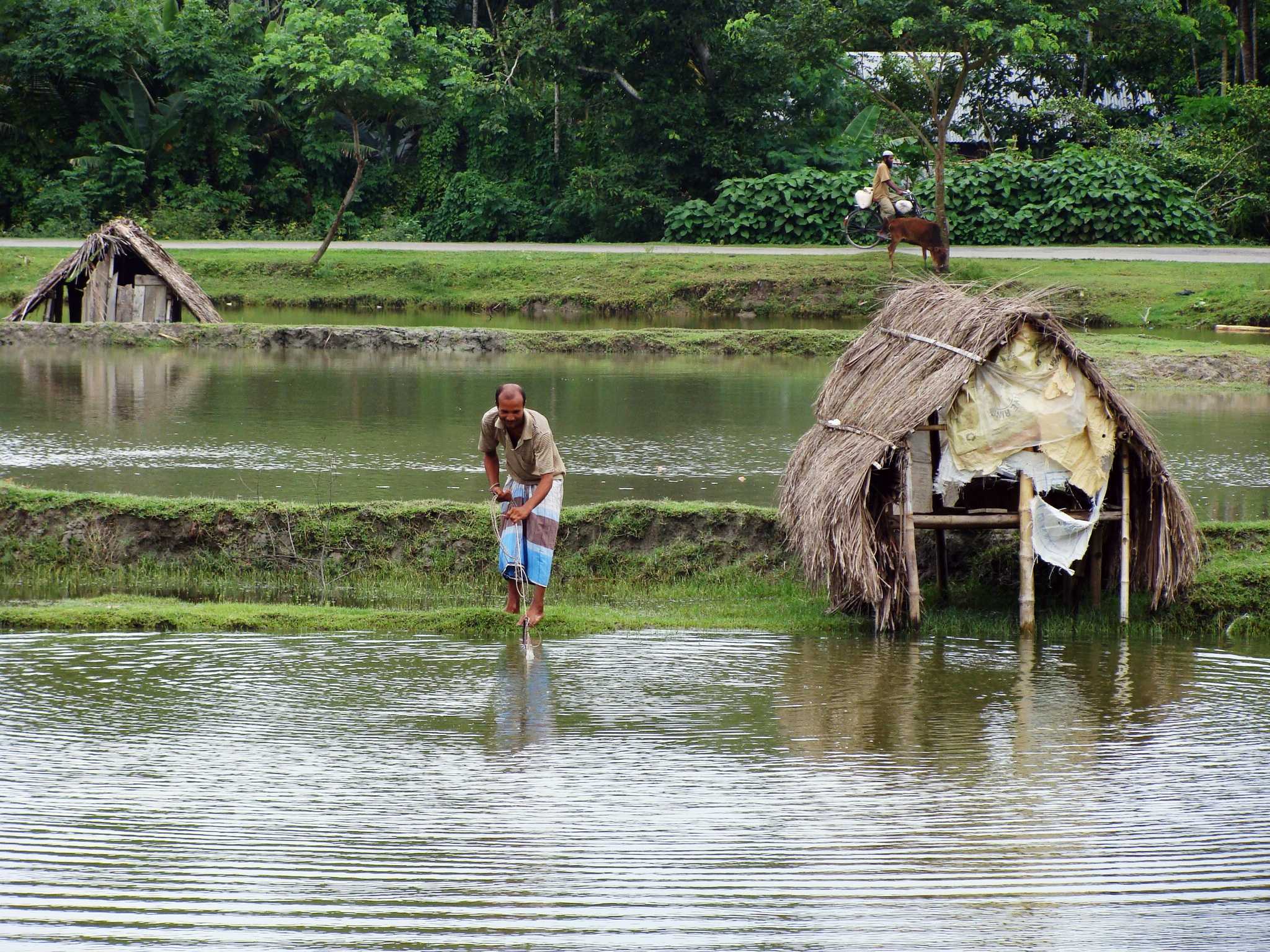The European Commission has set a new Bioeconomy Strategy focused on three key aspects: developing new technologies and processes for the bioeconomy, developing markets and competitiveness in bioeconomy sectors, and pushing policymakers and stakeholders to work more closely together. The Strategy is part of the Commission’s effort to boost jobs, growth, and investment in the EU. It aims to improve and scale up the sustainable use of renewable resources to address global and local challenges such as climate change and sustainable development.
The bioeconomy sector includes agriculture, forestry, fisheries, food, bio-energy, and bio-based products. It is one of the EU’s largest and most important sectors, with an annual turnover of around 2 trillion euro, and about 18 million people employed. As the world has limited resources, new ways of producing and consuming are required to meet the growing demand for food, feed, and energy, especially in the face of global challenges such as climate change and land and ecosystem degradation. A sustainable and circular bioeconomy can help address these challenges.
According to the new Strategy, a sustainable and circular EU bioeconomy can preserve nature, and restore healthy ecosystems; create 1 million new green jobs by 2030, in particular in rural and coastal areas; turn waste from farming, cities, food, and forests into new added values products; provide additional income for farmers, foresters, and fishermen; replace fossil material with renewable alternatives; increase the carbon sink capacity of soil, forest and ocean; and develop new biodegradable products, including bio-based plastic substitutes.
Achieving a sustainable circular bioeconomy, however, requires a concentrated and collective effort by public authorities and businesses. To drive this effort, which is based on three key objectives, the Commission will launch 14 concrete measures in 2019.
To strengthen and scale up the bio based sectors, and unlock investments and markets to unleash the potential of the bioeconomy to modernize the European economy and industries for long-term, sustainable prosperity, the Commission will:
Enlarge

The European Commission's Updated Bioeconomy Strategy
- Mobilize public and private stakeholders, in research, demonstration, and deployment of sustainable, inclusive and circular bio-based solutions
- Launch the EUR 100 million Circular Bioeconomy Thematic Investment Platform
- Study and analyze enablers and bottlenecks and provide voluntary guidance to the deployment of bio-based innovations
- Promote and/or develop standards and emerging market-based incentives, and improve labels applicable to bio-based products on the basis of reliable and comparable data on environmental and climate performance
- Facilitate the development of new sustainable biorefineries and confirm the type and estimated potential
- Invest in research and innovation for the development of substitutes to fossil based materials that are bio-based, recyclable, and marine-biodegradable, and of bio-remediation methods by mobilizing the key actors in the relevant value chains including the plastics value chain and to contribute to plastic-free, healthy and productive European seas and oceans
To deploy local bioeconomies rapidly across Europe to address the large underused biomass and waste potential, particularly in Central and Eastern Europe, the Commission will:
- Develop a Strategic Deployment Agenda for sustainable food and farming systems, forestry and bio-based production in a circular bioeconomy
- Make pilot actions to support local bioeconomy development (rural, coastal, urban) via Commission instruments and programs
- Set up an EU Bioeconomy policy support facility and a European Bioeconomy Forum for Member States
- Promote education, training, and skills across the bioeconomy
To understand the ecological boundaries of the bioeconomy to tackle the severe threats and challenges, such as a growing population, climate change, and land degradation facing the ecosystem, the Commission will:
- Enhance the knowledge on the bioeconomy, including on biodiversity and ecosystems, to deploy it within safe ecological limits and make it accessible through the Knowledge Centre for Bioeconomy
- Increase observation, measurement, monitoring and reporting capabilities and build an EU-wide, internationally coherent monitoring system to track economic, environmental and social progress towards a sustainable bioeconomy
- Provide voluntary guidance to operate the bioeconomy within safe ecological limits
- Better integrate the benefits of biodiversity-rich ecosystems in primary production through a specific support to agro-ecology, the development of microbiome-based solutions, and new tools to integrate pollinators in supply value chains
The recent 2018 update of the Bioeconomy Strategy, which was first launched and adopted on 13 February 2012 to addresses the production of renewable biological resources and their conversion into vital products and bio-energy, aims to accelerate the deployment of a sustainable European bioeconomy to maximize its contribution towards the 2030 Agenda and its Sustainable Development Goals, as well as the Paris Agreement. For Europe, a renewed bioeconomy strategy further supports the transition to a sustainable and circular bioeconomy, and fits wider EU priorities and policies (climate, circular, innovation, food, energy, trade, industry, agriculture, fisheries and marine, etc.). The bioeconomy is central to three of the 10 key priorities for the European Commission, as identified by President Juncker in his Agenda for Jobs, Growth, Fairness, and Democratic Change. These include the bioeconomy as a new source for jobs, as well as opportunities for the growth of new markets, such as bio-fuels, food, and bio-based products; the replacement of fossil raw materials with biological resources; and innovative bio-based and food industries to create a circular, resource-efficient economy.
So far, €3.85 billion have been invested in the bioeconomy under Horizon 2020 (2014-2020), and €10 billion have been proposed for food and natural resources, including the bioeconomy, under Horizon Europe (2021-2027).
Find the new Bioeconomy Strategy, Factsheet, Booklet, Infographic, and Video here.






